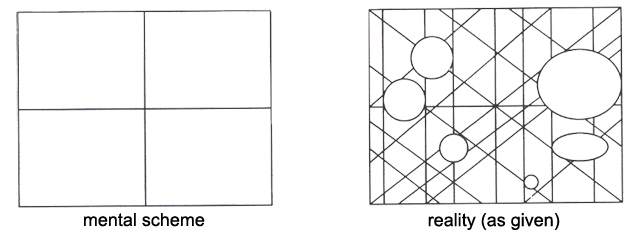We are waiting for the next container notion. And the question is who will welcome the new terminology. If there are many, it seems quite a lot will change. However, he who looks closer, knows better. The vocabulary is changing; the grammar remains more of less unchanged. In other words: our changing language makes the impression we are innovating but practice has shown little improvement and change for more than hundred years. We are talking with constructivist terms but meanwhile controlling, checking, accrediting, making things uniform, being aimed at results and products are the ruling parameters. Our systems have become standardized.
In this way the book ‘Experience Oriented Education; from orientation to implementation’ opens. It is the prologue of what will become a dismal story.
Aristotle wrote in his Poetica in the 4th century B.C. : ‘Learning is a natural pleasure. It is not reserved for philosophers, but available for everybody.’ Unfortunately it was not possible to write a handbook together with that truth which supplied a way in which that natural pleasure could be tuned to unique individuals in the following ages.
 |
1) The Daltonschool, where one wants to have children work as independently as possible by using individual tasks. In 2005 it was 100 years ago that Helen Pankhurst (1887-1973) started experimenting with new forms of education in America. In 1922 she laid down her ideas. Characteristic for Dalton Education is that is adapts itself continually to changing demands and expectations from society. The principles: freedom in commitment, independence and cooperation are still standing but have got different utterances throughout the years. |
 |
2) The Freinetschool, where children are taught to produce ‘free texts’ themselves. The French teacher Célestin Freinet (1896-1966) start from what the child goes through and experiences. From there he developed his pedagogic. Education does not take place according to fixed methods but starts from experiences and perceptions of children. Learning is not absorbing what others have devised; you only really learn if you can search and discover experimentally while acting and are able to communicate about that with others. The teacher does not determine one-sidedly what is happening but the group and the teacher plan the work in democratic/cooperative consultation. |
 |
3) The Free school, which puts the anthroposophic idea of Rudolf Steiner (1861- 1925) into practice. In the beginning of the previous century Steiner launched the anthroposophy from where he gave directions for upbringing and education. Starting-point in this is the way in which a human being develops and how this should be guided. The counselling is aimed at the total human being, to body, soul and spirit by which he is given the possibility to develop in all directions. Every teacher must be free – within the frame of the general guidelines (the curriculum) – in the way in which he organizes the education for his pupils. De subject-matter is – as far as the subjects are concerned and as far as the way of acting is concerned - tuned to the phase of development and the age in which the child is. |
 |
4) The Montessorischool, where the developing material which is dealt with in a special way serves the principle: educating is self-educating. The highest ideal that can be attained according to Maria Montessori (1870-1952) is that the guide makes herself ‘superfluous’; that is why there is the famous slogan: help-to-self-help. The subjects of interest differ per child and differ in a number of phases. This means that children are accessible to certain areas of learning for shorter or longer periods. When a child is in such a ‘sensitive period’ it is able to develop a function very intensively at that moment. It is the task and the expertise of the teacher to react adequately to these sensitive periods by offering the right material in the right environment. |
 |
5) The Jenaplan School, as it was designed by Peter Petersen (1884-1952) at the university of Jena with a scientifically founded discourse about a school concept in which anthropology (democratising, humanising and socializing), pedagogic and the practice of education are related to each other in a logical way. A Jenaplanschool is a community which comprise children, teachers and parents. Teachers are professional educators there. Parents have handed over part of the upbringing of their children to the school but they play an important part in education at all kinds of levels. The education in the school is aimed at the upbringing of children and entails therefore much more than teaching scholastic knowledge and skills. They do that by taking part in the so-called basic activities: speaking, playing, working and celebrating. The starting-point of school is that children are very different. Because children differ so much form each other they can learn a lot from each other. Because of this reason they are placed in stem-groups which consist of children of different ages as is the case in a family. |
 |
Piaget The Swiss psychologist Jean Piaget (1896-1980) studied biology and developed interest in philosophy. The part of knowledge theory (where does knowledge come from) interested him more than average. In order to lose himself in it he decided to study the development of knowledge in children. At first he thought he would need a couple of years for this but it haunted him for the rest of his life. One of the contributions to the psychology is among others that the potential to learn and to experience certain events consciously develops with age (cognitive development theory). During the first half year for example a baby does not realize that his parents still exist when they have left the room or that a toy still exists after he does not see it anymore. Only after the children have formed certain schemes about this person continuity or object continuity develops. And later it lastly till about the fifth year before a child realizes that milk still contains the same amount when it is poured from a narrow, high glass into a broad, low glass in spite of different proportions (notion of conservation). According to Piaget knowledge consists of structures (schemes). A structure can take up another structure: assimilation: the assimilating structures up the assimilated structure. The adaptation or accommodation is the change of a structure because of assimilating. Both these mechanisms should be in balance for a healthy development: equilibration. Because of assimilation and accommodation more and more complex structures develop during the development. Piaget was convinced that fundamental characteristics of knowledge take care that development is manifest in different (usually four) levels. According to Piaget there are qualitative differences between children that are on different levels. Piaget know how to establish rather accurate age barriers for these levels although other scientists have never confirmed if they really exist. |
 |
Vygotski The Russian psychologist, philosopher and artist Lev Vygotski (1896-1934) was strongly influenced by the ideas of Karl Marx. His work was not appreciated in the Soviet Union because of which it only became known in the western world in 1958. Vygotski has especially been known by his activities in linguistics. In this he was mainly occupied with the relationship between thinking and language, something which had not been systematically investigated in psychology till then. Before this the starting-point was that speaking was the outer expression of thinking. Despite the intuitively plausible character of this Vygotski thought that it was not completely right conceptually. He did think that thinking is restructured when it is expressed in language (or “completed” as he said). Vygotski also became known because of his research with children. In this respect he called the child a dependent individual that cannot live isolated. While Jean Piaget put emphasis especially on the interaction of the child with the physical world, Vygotski regarded it rather the interaction with the social world. The child learns from a social environment en learns the language in the first place to speak with others. It starts learning the language by pronouncing the words loudly. When the child grows further, it learns to internalise the words which means that the language is happening inside the head in a very simplified way (not to be recognised as language) Furthermore Vygotsky is know because of his notion ‘zone of nearest development’. This notion represents Vygotski’s view on human development: a child has reached a certain cognitive development and can close a gap to the zone of nearest development with the help of a counsellor. The counsellor has to take care, if the learning is to be successful, that the child makes use of the ‘tools’ of the actual cognitive level. |
 |
For most people seeing these signs a melody starts playing in their heads. In mine nothing happens. |
Every human being literally has a different view of reality because reality is constructed from your own perception. And a every human being has a different perception. Sometimes that is clear: if somebody is (colour)blind or deaf. But mostly the differences are so shaded that a general observation shows little difference. That difference in perception has big consequences for our interactions. When we say to children: “Have a better look”, then the question remains if that is possible (‘having a better look’) and if they will see what you see when they (‘are having a better look’). Or what did you think of remarks as: “Pay more attention” , “If you look well, you will see it”, “You can do it….” These remarks have a great impact on children’s self-esteem. They continually get random judgements on their actions.
You must wonder what you demand from children if you want them ‘to explain it to the other’. We know that children can sometimes do this better because they would understand each other so well. The question is what they understand so well. Perhaps it is that children do not understand anything wrongly in any case so that children do not have to guess every time what you mean.
When handicaps and abnormities are clear we do not make a mistake easily. We do not tell a deaf child to listen better. We do not tell a blind child it has to look better .But we do tell ’normal’ children these things while everybody is deaf or blind in a certain way. It is often difficult to find out for what and to what extent. An electrician can see wiring through the walls and the ceiling which are actually not perceptible. He ‘sees’ them because he knows where they are and what they look like. You do not see them (not even if he asks you to look better.) A teacher can give an instruction about multiplication supposing children have followed and understood him. He ‘sees’ the calculation, has references with regard to relevant structures and understands the context. Some children do not ’see’ that. The professional question is not: “How do you teach children to understand what you understand?” but “Are you capable to see through the structures of the child and come to useful interventions from there?”
Some counsellors keep asking children to show what they (still) cannot do. Children like to show what they can do. The professional then exactly knows what could be the next step.
A known developmental psychological phenomenon with babies is the lack of object continuity. We see babies are challenged by objects which occur within their field of vision. If the objects are gone, they do not exist anymore. The baby does not ‘ask’ for the ball or the cuddly toy. We think that is self-evident. But if a colleague does not stick to his word (we clearly agreed in the meeting that everyone would hand it in this week…) we can hardly imagine the regression.
If you want to get further, you must have a constant willingness to realize that you can see it wrongly.
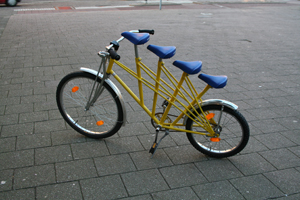
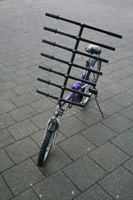
Structure
I asked one of the pupils in group 3/4 why he had not cleared the arithmetic cupboard. For his name was with this task on the clearing up list. He asked me: “What is the arithmetic cupboard?”
The structure of one person is not self-evidently the structure of the other one.
I used to tell the children sometimes that I did not bring the contract letters (on which they planned their weekly tasks) with me and asked them to draw the scheme themselves and fill it in. You then saw immediately which children had got the structure and which had not.
The child belongs to itself and others can help it becoming that.
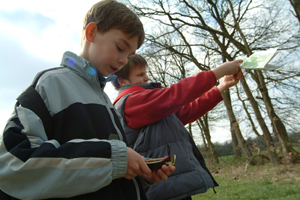
In that body there is a human being that thinks and feels: the upper seven centimeters of a human being are interesting. But do you also take into account genes, intestines, longings, prejudices, memories, talents, traumas, gastric juices, mourning processes, examples. white blood-cells, failures, causes of anger, causes of happiness, capacities, sweat-glands, preferences, sensitivities, causes of dreams, nervous traits, needs and neurotransmitters?
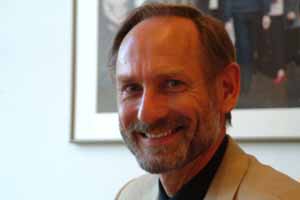
Increasing wellbeing and involvement is not always a matter of giving more autonomy, more freedom and making more space. It is constantly attuning to what children need in a particular context.
And now without ‘fun’
A teacher of group 3 invites me in her class. Her children have not been involved in the ‘weekend circle’ for some time. I join a sociable class.
Children that want to tell their experiences are seated on a beautiful, big chair. When they have finished telling their story, children may ask questions. I listen to a few ‘rounds’. Indeed the children are not really involved. I have the impression that the story about the visit to grandmother and about the football match are not told for the first time, but I guess, that I cannot change that as a visitor. It struck me that the questions are asked from a strong analogy. Almost every question has as keyword ‘fun’. “Was the match fun?” “Did the others think it was fun?”
Fun does not seem fun enough here. When the fourth child tells a story about gymnastics I tell the children they may ask questions again but now without the word ‘fun’. It is getting noisy. A question without ‘fun’ is not self-evident. Some children are thinking visibly, others are deliberating with each other. Bart raises his finger. “Did you do gymnastics beautifully?”
His question was answered affirmatively.
“And now you may not say ‘fun’ or ‘beautiful’ anymore is my assignment. Involvement has got a face. Children are extremely attentive. This is really hard. But Amir has got one: “Were you standing on your hands? ”
After the next stories questions have to be made up without ‘fun’, ‘beautiful’ and ’standing on one’s hands’. Some children immediately hear in the following questions which word may not be used again and they remember the total row. The weekend circle has become a game. The stories are subject-matter of tuition and the children correct each other with fun.
The teacher was surprised about the simplicity of the intervention. She told me later that day that she had been focused especially on increasing freedom with reference to increasing involvement. Now she has seen the opposite. Later she indicated that the children had been highly involved during the weekend-circles when ‘this game was being played’. And after that….. you had to think again of new interventions. But now from the idea that increasing space and limiting space can both lead tot involvement.
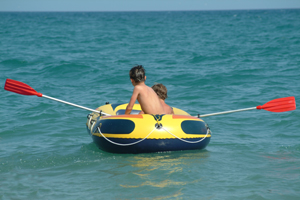
At the moment the insight of an expert seems to have become the norm.
But speaking about boats: you know that Noah’s Ark was built by amateurs and the Titanic by experts.
